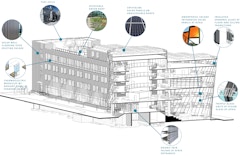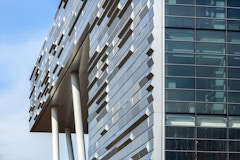
Façade Systems and Embodied Carbon
Life Cycle Assessment (LCA) is a methodology used to quantify the impact of building construction supply chains on the environment in terms of

Life Cycle Assessment (LCA) is a methodology used to quantify the impact of building construction supply chains on the environment in terms of

This paper analyzes sustainable retrofit strategies for an existing research laboratory building, located in a cold climate. This facility is

In the vein of mass production, manufacturers leverage repeatable parts and modular construction in an effort to maximize quality control while




As architects and designers we understand the urgency of addressing the building sector’s role in the ongoing environmental crisis. Architecture2030

The traditional building facade as a permanent construction does not actively respond to the differing needs from varying weather conditions.

The real estate market continues to demand “all glass” buildings often to the detriment of human comfort and thermal performance. For an office


With the advent of more sophisticated analysis methods and the desire to optimize geometries of structural silicone joints in high performance

Building envelopes cover a considerable part of the urban exterior surfaces, and to therefore have a significant leverage effect on the climate

Architects today must explore alternative enclosure materials to meet evolving energy codes and embodied carbon regulations. Terra cotta has been

The recently completed Capital One Hall performing arts center located in the Washington DC metro area is defined by a pleated exterior of glass and


This article explores the need for measurement and verification of building envelope and mechanical systems.

Double-Skin Facades (DSF) are well-known to boost the thermal performance of a façade: they can provide extra insulation in the wintertime and lower


Thermal discomfort can occur in perimeter zones due to radiant heat loss from the occupant to a poorly insulated exterior wall. It is valuable for

Ever-increasing performance requirements in the latest version of the energy codes are compelling project teams to consider the thermal performance of the building envelope more rigorously than ever before.